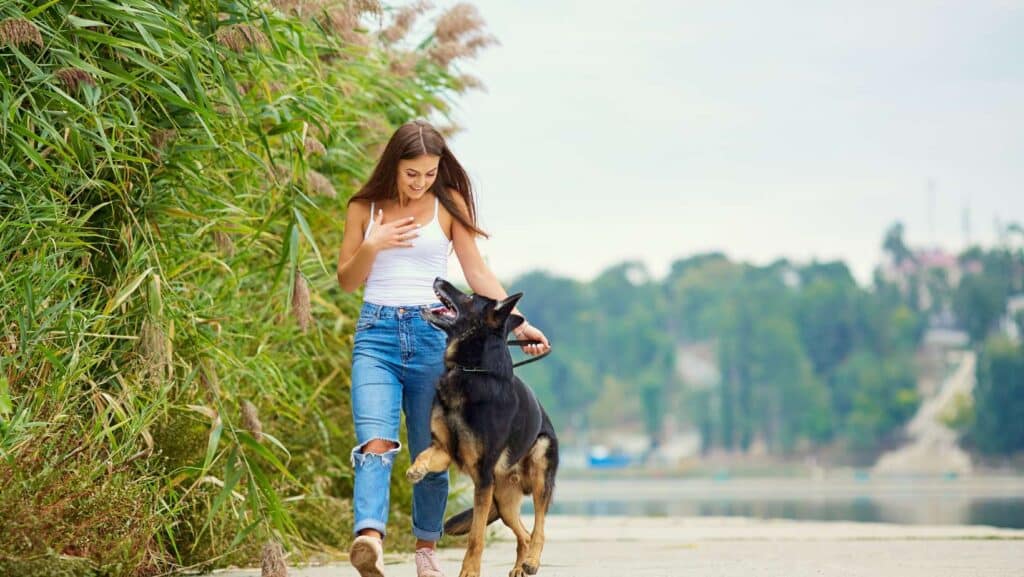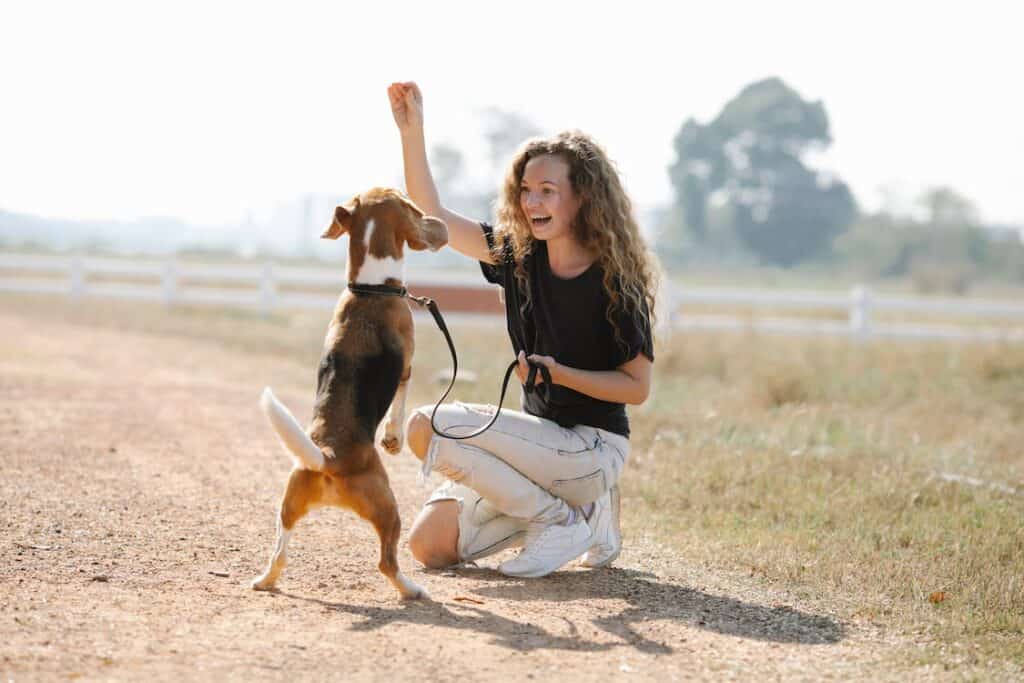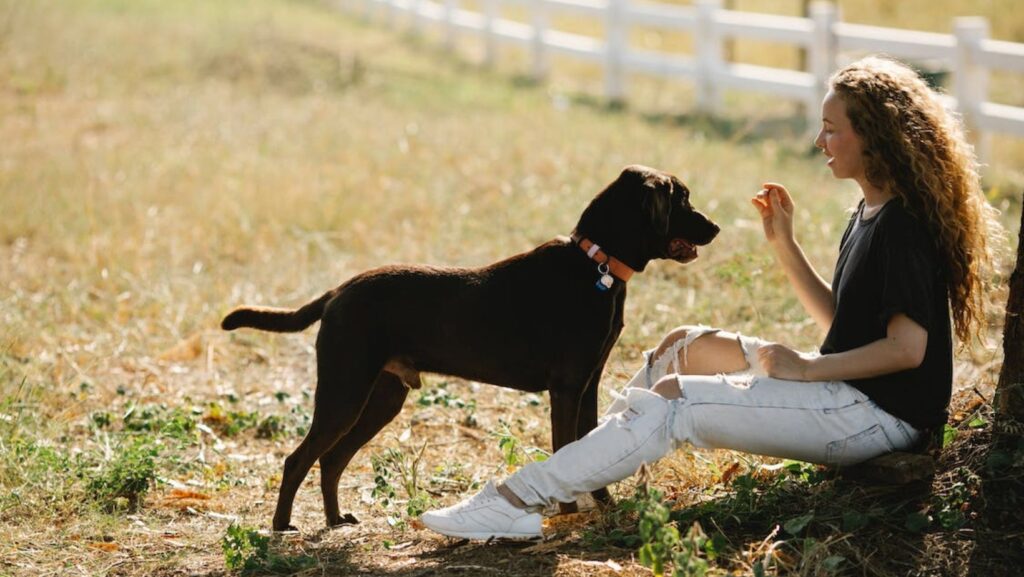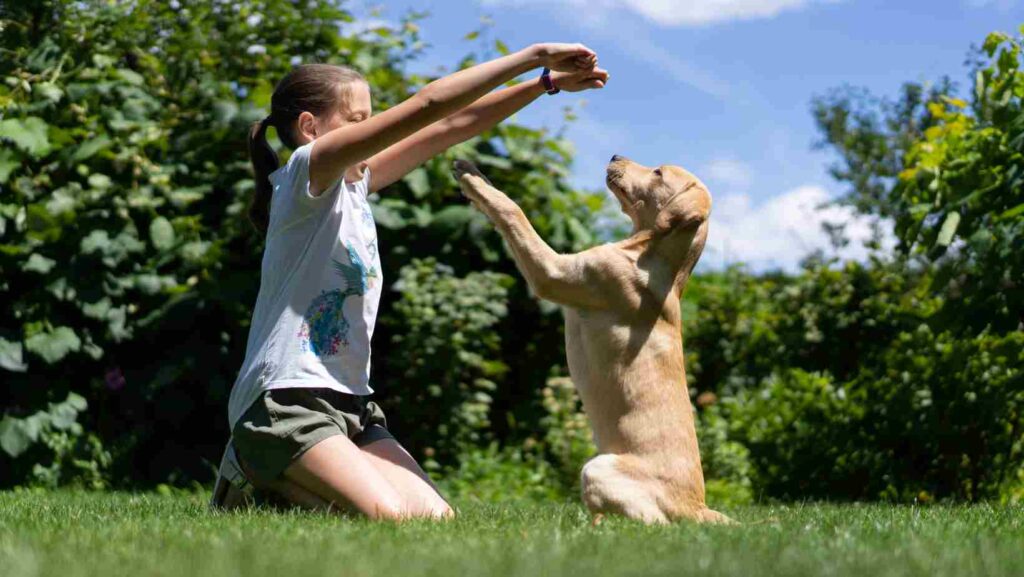Dog obedience training is an important aspect of responsible pet ownership. It goes beyond teaching basic commands like “sit” and “stay.” This article explores the reasons why dog obedience training is important for both dogs and their owners.
Understanding the Importance of Dog Obedience Training
Establishing a Strong Bond
One of the main reasons for dog obedience training is to make a strong bond between the dog and its owner. Training sessions provide an opportunity for dogs to learn and interact with their owners, building trust and understanding. This bond forms the foundation for a harmonious relationship and enhances the overall well-being of both parties.
Ensuring Safety
Well-trained dogs are more likely to respond to commands promptly, especially in potentially dangerous situations. Obedience training teaches dogs to come when called, stay away from hazardous substances, and avoid dangerous behaviors. This training significantly lower the risk of accidents or injuries, ensuring the safety of the dog and those around them.
Enhancing Communication
Effective communication between a dog and its owner is vital for a healthy and happy partnership. Obedience training helps to improve communication by teaching dogs to understand verbal cues, hand signals, and body language.
This clear line of communication enhances the owner’s ability to deliver their expectations and reinforces the dog’s understanding of commands.
Promoting Good Behavior
Basic obedience training plays a important role in promoting good behavior. Dogs can learn appropriate conduct through consistent training. Examples include walking on a leash without pulling, greeting people politely, and staying calm in various situations.
By reinforcing positive behavior and discouraging unwanted actions, obedience training molds dogs into well-mannered companions.

Benefits of Dog Obedience Training
Better Control and Management
Obedience training provides dog owners with better control and management over their pets. Dogs that respond reliably to commands can be easily controlled in public places, around other animals, or during potentially stressful situations.
This control gives owners the freedom to take their dogs to different places. They can do activities together without worrying.
Improved Socialization Skills
Socialization is important for dogs to interact appropriately with other dogs, animals, and people. Obedience training often includes socialization exercises, exposing dogs to different environments, sights, sounds, and smells.
Reducing Behavioral Issues
Many behavioral issues in dogs stem from a lack of proper training. Obedience training addresses these issues by teaching dogs how to respond appropriately in different situations.
Dogs that undergo obedience training are less likely to engage in destructive chewing, excessive barking, digging, or aggression.
This training not only benefits the dog but also creates a more harmonious living environment for the entire family.
Enhancing Mental Stimulation
Obedience training provides mental stimulation for dogs, which is essential for their overall well-being. Training sessions challenge dogs mentally, keeping their minds active and engaged. Dogs that receive regular mental stimulation are less likely to exhibit boredom-related behaviors, such as excessive chewing or digging.
Different Training Methods and Approaches
When it comes to dog obedience training, various methods and approaches can be employed. Here are some commonly used techniques:
Positive Reinforcement Training
Positive reinforcement training involves rewarding desired behaviors with treats, praise, or affection. This method focuses on reinforcing positive actions rather than punishing unwanted behaviors.
Dogs trained using positive reinforcement are motivated to repeat behaviors that result in rewards, creating a positive learning experience.
Clicker Training
Clicker training utilizes a small handheld device that produces a distinct clicking sound. The clicker is paired with rewards to mark desired behaviors.
Dogs have a knack for associating a click sound with positive reinforcement. This makes clicker training an effective way to teach new commands and behaviors.

Marker Training
Similar to clicker training, marker training uses verbal cues like “yes” or “good” to mark desired behaviors. The marker serves as a signal to the dog that they have performed correctly and will receive a reward.
Remote Training
Remote training involves the use of electronic collars or devices that provide feedback to the dog. These devices emit a vibration, tone, or mild stimulation to get the dog’s attention or discourage unwanted behavior.
Remote training should be used responsibly, following proper guidelines and under the supervision of a professional trainer.
Relationship-based Training
Relationship-based training focuses on building a strong bond and connection between the dog and its owner. It emphasizes positive reinforcement, communication, and understanding. This approach takes into account the individual dog’s personality, motivations, and needs to tailor the training program accordingly.

Choosing a Professional Dog Trainer
When seeking professional help for dog obedience training, consider the following factors:
Experience
Ensure the trainer has relevant experience in dog training. Look for certifications or memberships in recognized dog training organizations. Experienced trainers have a wealth of knowledge and expertise to handle various training scenarios.
Positive Training Techniques
Choose a trainer who emphasizes positive training techniques and avoids harsh or punitive methods. Positive reinforcement-based training is widely regarded as the most effective and humane approach to dog training.
Good Communication Skills
Effective communication between the trainer, the dog, and the owner is vital. A good trainer should have clear communication skills.
They should listen to the owner’s worries and concerns. They should also provide guidance and support throughout the entire training process.
Customized Training Plans
Each dog is unique and may require a customized training plan. A professional trainer should assess the dog’s temperament, behavior, and training needs.
They should then create a training program tailored to address any goals and challenges.
Training Tips for Dog Owners
If you prefer to train your dog yourself, here are some helpful tips:
Start Early and Be Consistent
Start training your dog as early as possible. Young puppies have a greater capacity to learn and adapt. Be consistent in your training approach, using the same commands, cues, and rewards. Consistency helps dogs understand expectations and accelerates the learning process.
Use Positive Reinforcement
Positive reinforcement is a powerful training tool. Reward your dog with treats, praise, or play when they exhibit desired behaviors.
This positive feedback reinforces the behavior you want to see more of and motivates your dog to continue learning.
Patience and Persistence
Training takes time and patience. Dogs may not grasp a command immediately, so it’s important to remain patient and avoid frustration. Keep training sessions short and frequent, gradually increasing the difficulty level as your dog progresses. Persistence pays off in the long run.
Socialize Your Dog
Socialization is crucial for dogs to develop good behavior and adaptability. Expose your dog to different people, animals, and environments from an early age. Proper socialization helps prevent fear or aggression towards new experiences and promotes well-rounded behavior.
Common Challenges in Dog Obedience Training
While training your dog, you may encounter some common challenges:
Housebreaking
Housebreaking is teaching your dog appropriate bathroom behavior. It requires consistency, patience, and a regular schedule. Gradually introduce your dog to a designated bathroom area and reward them for removing it in the right place.
Leash Pulling
Many dogs tend to pull on the leash during walks, making it uncomfortable for both the dog and the owner. Using positive reinforcement techniques, train your dog to walk calmly on a loose leash. Teach them to pay attention to you and reward them for walking beside you without pulling.
Excessive Barking
Excessive barking can be a nuisance and disturb the peace in your home or neighborhood. Identify the triggers that cause your dog to bark excessively and address them accordingly. Training techniques such as redirecting their focus can help reduce excessive barking.
Jumping on People
Jumping on people is a common behavior in dogs seeking attention or excitement. Train your dog to greet people politely by teaching them an alternative behavior, such as sitting or standing calmly.
Conclusion
Dog obedience training is essential for creating a strong connection between dogs and their owners. It also helps to keep them safe, improve communication, and foster good conduct. Investing time and effort in training your dog can bring many benefits.








